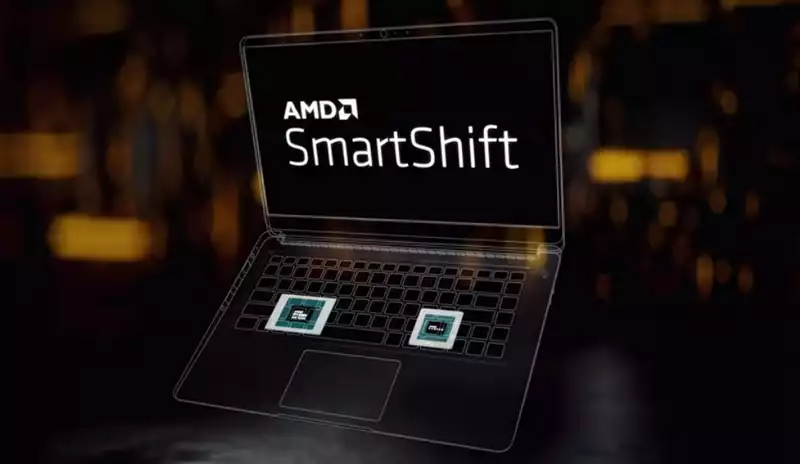By bringing the Zen 2 architecture to mobile (Ryzen 4000 series), AMD is poised to open up a larger gaming laptop market at Intel's expense. And after all, not only is AMD's new mobile CPU itself attractive, but also the accompanying technology called SmartShift, which effectively improves frame rates during gaming. For the time being, however, only Dell is using this feature.
SmartShift works by dynamically shifting CPU and GPU power consumption depending on the task. When playing games, SmartShift redirects CPU power to the GPU; according to AMD, this can result in up to 14% better game performance. It also helps with video editing, 3D rendering, content creation, and productivity.
There are real benefits, too; in his review of Dell's G5 15 SE gaming laptop with a Ryzen 7 4800H CPU and Radeon RX 5600M GPU, Jorge found that with SmartShift available, the gains are more modest than AMD is touting Although, he stated, it was "on par with more expensive systems with RTX 2060s."
As our friends at Anandtech found, AMD's Frank Azor (formerly of Alienware) answered this question on Twitter.
According to Azor, Dell jumped on board earlier than any other OEM, as implementing something like SmartShift requires a certain amount of lead time, and AMD was able to get Dell on board early, despite Dell's historical preference for Intel hardware. It was able to get Dell to understand this concept at an early stage. As a result, the G5 15 SE is the only SmartShift option in town and will remain so for the remainder of 2020.
Azor also noted that AMD is "working hard" to get other OEMs to follow suit for 2021. In the meantime, consumers who have their eyes on non-SmartShift-equipped laptops like the Asus TUF A15 will have to decide if it is worth the wait.
It should be noted that Nvidia recently announced a similar feature called Max-Q Dynamic Boost for their mobile GeForce RTX GPUs. [Our Max-Q Dynamic Boost technology automatically enables real-time GPU and CPU power balancing, allowing the system to dynamically shift up to 15W of power from the CPU to the GPU during GPU-intensive workloads such as gaming Power balancing Because the system's power demand is intelligently evaluated on a frame-by-frame basis, power shifts are only made when necessary," Nvidia explains.
According to Nvidia, this can result in "free" performance gains of up to 10% in games on supported models. the advantage of Nvidia's implementation is that while SmartShift only works with AMD's Ryzen 4000 series, it works with both Intel and AMD CPUs, whereas SmartShift works only on AMD's Ryzen 4000 series.
We have not tested a laptop with Dynamic Boost, but we suspect that the performance gains will be similar to what we have seen in Dell's system (not quite as good as promised under ideal conditions, but pretty good).


Comments